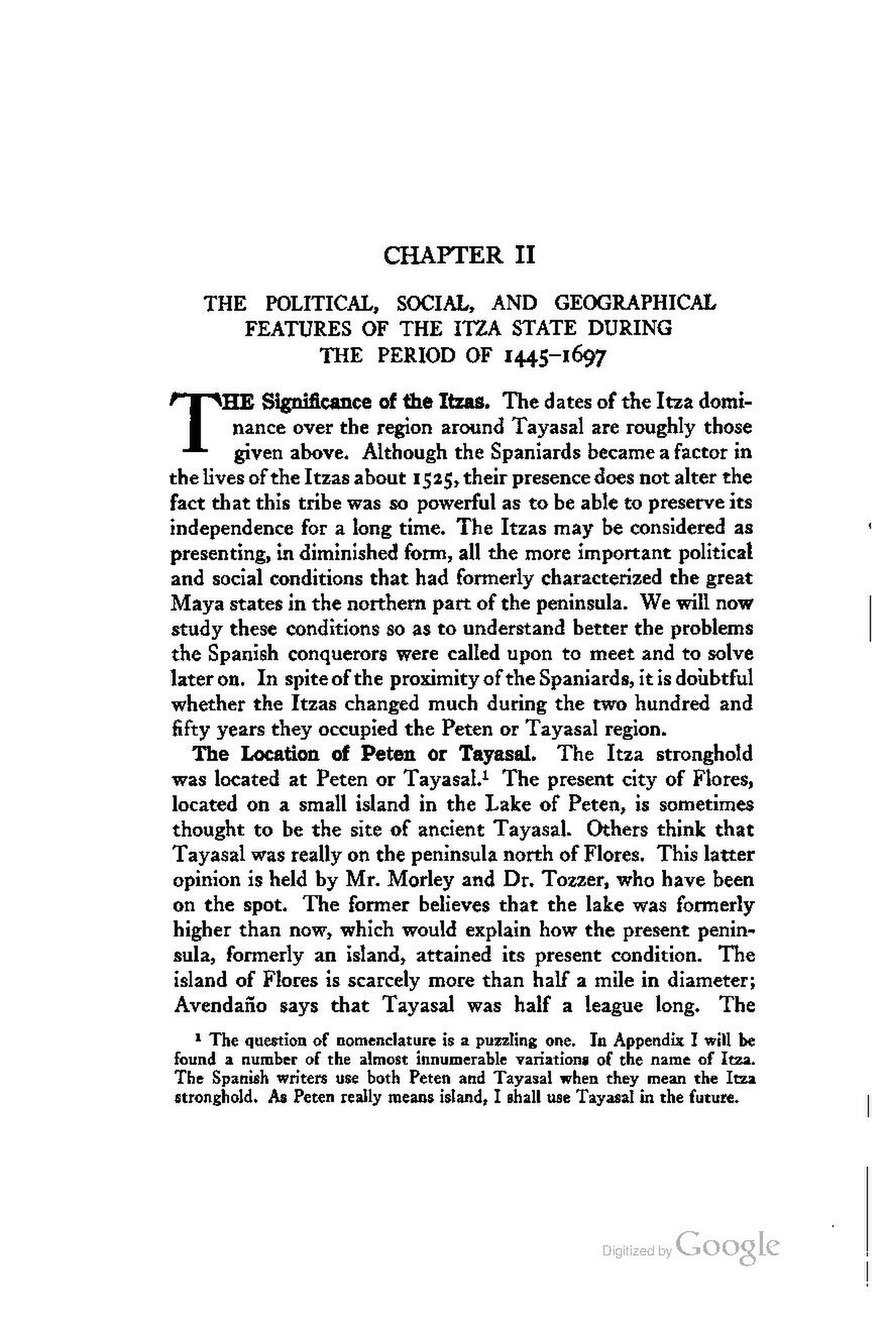CHAPTER II
THE POLITICAL, SOCIAL, AND GEOGRAPHICAL
FEATURES OF THE ITZA STATE DURING
THE PERIOD OF 1445-1697
THE Significance of the Itzas. The dates of the Itza dominance over the region around Tayasal are roughly those given above. Although the Spaniards became a factor in the lives of the Itzas about 1525, their presence does not alter the fact that this tribe was so powerful as to be able to preserve its independence for a long time. The Itzas may be considered as presenting, in diminished form, all the more important political and social conditions that had formerly characterized the great Maya states in the northern part of the peninsula. We will now study these conditions so as to understand better the problems the Spanish conquerors were called upon to meet and to solve later on. In spite of the proximity of the Spaniards, it is doubtful whether the Itza changed much during the two hundred and fifty years they occupied the Peten or Tayasal region.
The Location of Peten or Tayasal. The Itza stronghold was located at Peten or Tayasal.[1] The present city of Flores, located on a small island in the Lake of Peten, is sometimes thought to be the site of ancient Tayasal. Others think that Tayasal was really on the peninsula north of Flores. This latter opinion is held by Mr. Morley and Dr. Tozzer, who have been on the spot. The former believes that the lake was formerly higher than now, which would explain how the present peninsula, formerly an island, attained its present condition. The island of Flores is scarcely more than half a mile in diameter; Avendaño says that Tayasal was half a league long. The
- ↑ The question of nomenclature is a puzzling one. In Appendix I will be found a number of the almost innumerable variations of the name of Itza. The Spanish writers use both Peten and Tayasal when they mean the Itza stronghold. As Peten really means island, I shall use Tayasal in the future.
